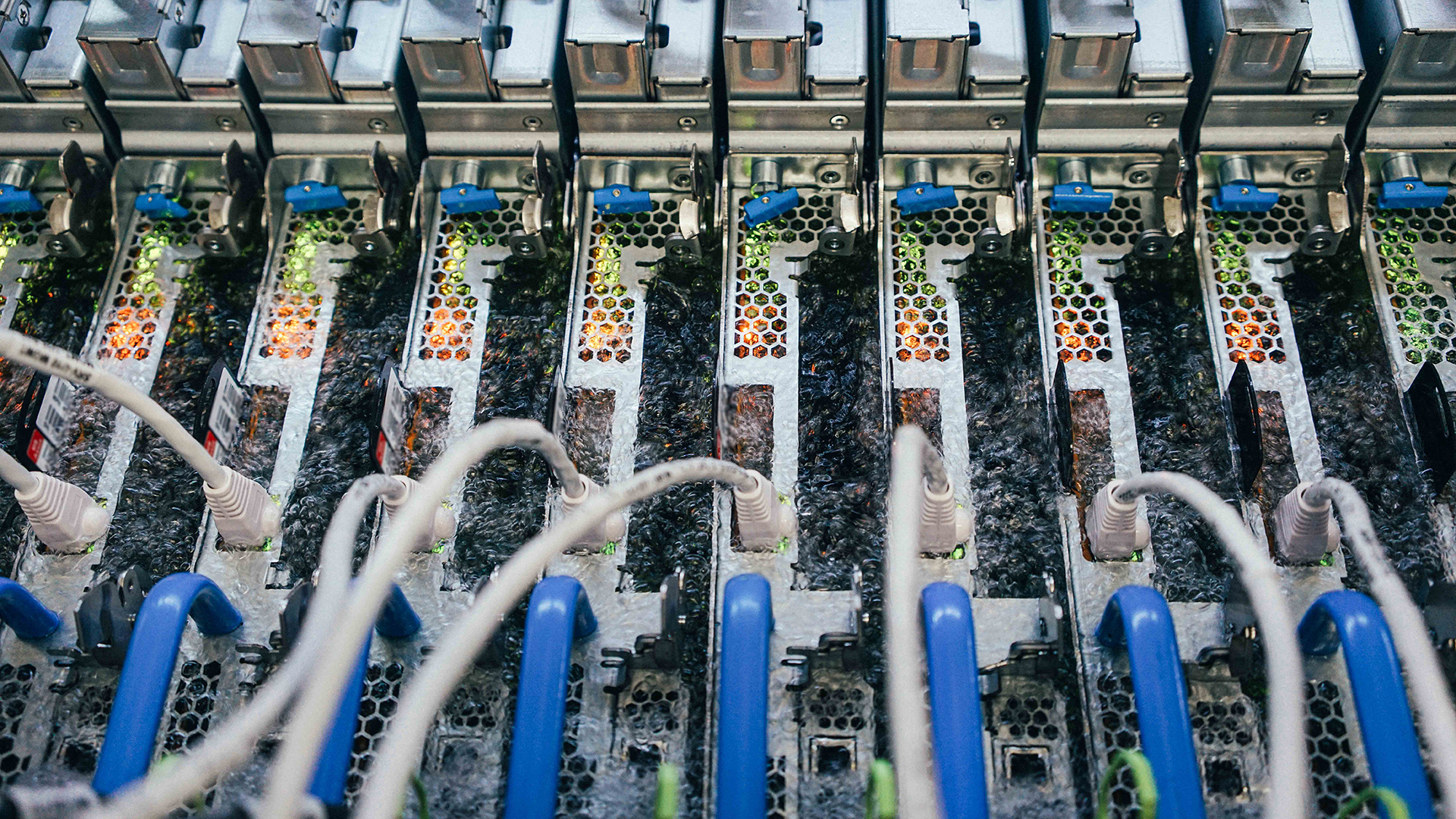 AI
AI
 AI
AI
 AI
AI
Generative artificial intelligence models such as ChatGPT are known to consume vast amounts of energy, but few people are aware of the enormous amounts of water required to keep them up and running too.
In their latest environmental reports, Microsoft Corp. and Google LLC – two of the leading players in the generative AI industry – reported a massive spike in the water consumption of their data centers, which experts attribute to the growing popularity of AI models.
An article in the Associated Press published Saturday reported that Microsoft’s data center water use increased by 34% from 2021 to 2022. The company slurped up more than 1.7 billion gallons, or 6.4 billion liters, of water last year, which is said to be enough to fill more than 2,500 Olympic-sized swimming pools.
It was a similar story with Google, which reported a 20% spike in its water consumption over the same timeframe.
Shaolei Ren, a scientist at the University of California at Riverside who has carried out studies to evaluate the environmental impact of generative AI, told AP News that the majority of growth in water consumption is due to an increase in AI workloads. “Most people are not aware of the resource usage underlying ChatGPT,” Ren added. “If you’re not aware of the resource usage, then there’s no way that we can help conserve the resources.”
In a paper that Ren intends to publish later this year, he estimates that OpenAI’s GPT-3 model, which powered the first release of ChatGPT, consumed more 85,000 gallons of water during its training. The same report said ChatGPT itself likely guzzled up the equivalent of a 500-milliliter bottle of water for each discussion that involved between 25 and 50 questions. The estimate includes indirect water usage, such as that used by power plants to provide the data centers with energy.
It’s notable that Google’s water consumption increase wasn’t uniform across all of its data centers. Water use remained steady at its Oregon facility, which has previously attracted negative headlines on its high consumption. However, its Council Bluffs data centers in Iowa drew more potable water than any other data center. Several factors determine how much water is used by a data center, including its location, the season and the data center cooling technology used.
The issue is that many data centers employ massive cooling systems to avoid overheating the servers that power their AI computations. Most use HVAC, or heating, ventilation and air conditioning, systems that need significant amounts of water, while others use cooling towers that are often just as thirsty. Some cleaner energy sources, such as thermoelectric plants, also rely on massive amounts of water for cooling purposes.
Although AP’s reported will likely alarm environmentalists, it’s important to keep things in perspective, analyst Holger Mueller of Constellation Research Inc. told SiliconANGLE. He said the spike in water use is interesting, but the bigger concern remains energy consumption.
“Much of the water used by data centers is recycled, even if only by nature itself, but the same cannot be said for energy,” he pointed out. “It’s also worth noting that while attention is being focused on cloud data centers, these generally beat on-premises facilities in terms of efficiency due to greater utilization. What’s more, both Microsoft and Google are commercially motivated to reduce their energy and water footprints.”
When asked about its increased water consumption, Microsoft told AP that it’s working on ways to make its large compute systems more energy-efficient for both training and application workloads.
Microsoft has previously stated it intends to become “water positive,” as well as carbon negative and waste-free by 2030. There is no formal definition for what “water positive” means, but it generally indicates a commitment to not only save water, but put more back into the environment than what is taken out.
For instance, Pepsi Co. has reported a number of strategies to become water positive at its snack factory in Mexico City, a “high water risk area.” After water is run through its factory machinery, it’s collected and treated to drinking-safe standards. It’s then transported to another facility nine miles away where it’s used to wash potatoes for the company’s Sabritas chips.
Microsoft hasn’t defined how it intends to become water positive, but in its sustainability report it said it will continue to analyze its emissions, boost its usage of clean energy to power data centers, purchase renewable energy and invest in other eco-friendly technologies.
OpenAI told AP that it “recognizes” AI training is both energy and water-intensive, and said it’s actively working to improve its efficiencies in these areas.
Solutions to the problem include lowering the energy requirements of AI models, which involves building more efficient algorithms and hardware, though doing so will take time. Microsoft has also explored more creative ideas, such as locating its data centers in the ocean. In 2018, it sank one of its facilities off the coast of Orkney, Scotland, and studied its performance for two years, finding that it dramatically improved its energy efficiency.
The advantage of undersea data centers is they can use the water in the ocean for cooling. Microsoft said that immersing the entire facility underwater also helps to keep it cooler, meaning its cooling systems weren’t required to do so much work.
Support our mission to keep content open and free by engaging with theCUBE community. Join theCUBE’s Alumni Trust Network, where technology leaders connect, share intelligence and create opportunities.
Founded by tech visionaries John Furrier and Dave Vellante, SiliconANGLE Media has built a dynamic ecosystem of industry-leading digital media brands that reach 15+ million elite tech professionals. Our new proprietary theCUBE AI Video Cloud is breaking ground in audience interaction, leveraging theCUBEai.com neural network to help technology companies make data-driven decisions and stay at the forefront of industry conversations.